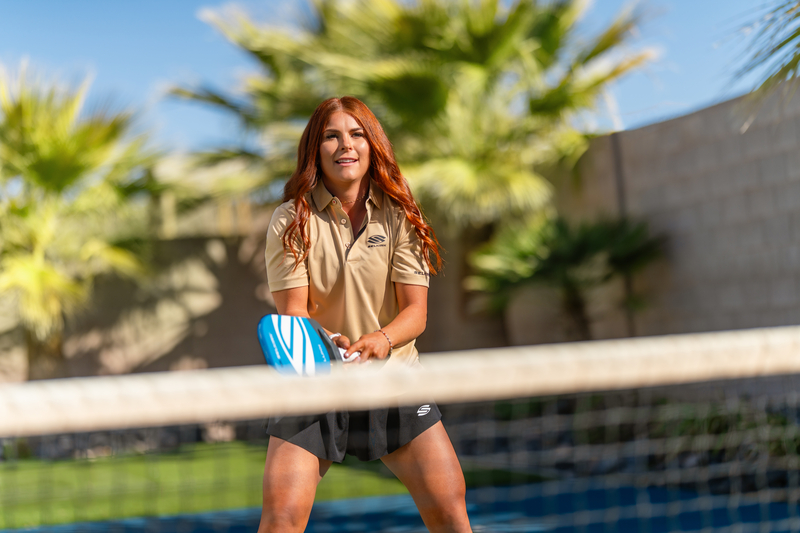If you are brand new to pickleball, pickleball ratings definitions can be pretty confusing. Do you start at a 0.0? Why not? And when are you considered a beginner-level pickleball player? Here are some facts about being a beginner pickleball player.
Beginner-level pickleball player (3.4 and below)
The definition of a beginner pickleball player may change, depending on who you ask. The top level is generally going to be around a 3.4 — but some believe a beginner starts at 1.0 and some think a beginner can start as high as 2.5. The difference is a 1.0 - 2.4 player has yet to begin and knows nothing about the rules of pickleball. You likely also have a sports background.
Once you have begun playing and understand the rules, you can consider yourself a 2.5.
Pickleball rating 2.5
- You understand the rules of pickleball well enough to play a game.
- You have very limited pickleball experience.
- You can keep up with a rally, as long as you are playing with players of your same ability.
- You have a basic understanding of how to keep score.
Pickleball rating 3.0
According to USA Pickleball, a 3.0 pickleball player can (at minimum), the following:
- Forehand: You can hit a medium-paced shot, but not with direction or consistency.
- Backhand: You try not to use your backhand unless it’s absolutely necessary. But when you do, it does not have direction or consistency.
- Serve & Return: You can return a medium-paced shot, but you are not able to do so with any strategy.
- Dink: You are not always able to maintain a “dink rally” because you cannot yet control your dink consistently.
- Third Shot: You can hit a medium-paced third shot, but not with any strategy behind it.
- Volley: You can hit a medium-paced volley, but not with any strategy, direction, or consistency.
- Strategy: You understand the basics of what you should be doing, but you do not yet have the skill to do it. You are still learning your position, but you do know basic rules and can keep score. You may already be playing in tournaments.
A 3.0 to 3.4-level pickleball player can also be considered a lower intermediate-level pickleball player.
Beginner pickleball skills
Beyond the basics of understanding how to play pickleball, there is not much more you have to be able to do to consider yourself a 2.5 pickleball player. When you do start playing on a regular basis, you can then judge your skills to see if you have been moving up to a higher-level beginner player.
Once you reach a 3.0 pickleball rating, you should be able to play a whole game without many questions (all players have some questions, no matter how long they have been playing).
How to improve your pickleball skills
Everyone who plays pickleball starts in the same place: as a beginner player. You can improve your skills at a different pace than others, but it depends on so many different factors. Here are many things that can affect how quickly you improve:
- How often you play.
- How often you drill.
- Your hand-eye coordination.
- Your sports background.
- Your athletic shape.
- How dedicated you are to learning the rules of pickleball.
- The other players you are playing with and competing against.
- Your age.
- And so much more.
Beginner pickleball player --> Intermediate
Moving from a beginner pickleball player to an intermediate pickleball player (or eventually, an advanced-level player) can happen with a lot of work, and everyone moves at their own pace. Do not be worried if you seem to be progressing slower (or faster) than your peers.
If you are just getting started in pickleball, drilling, playing, and learning all the rules will be the three most important things you can do to eventually make your way as an intermediate pickleball player.

